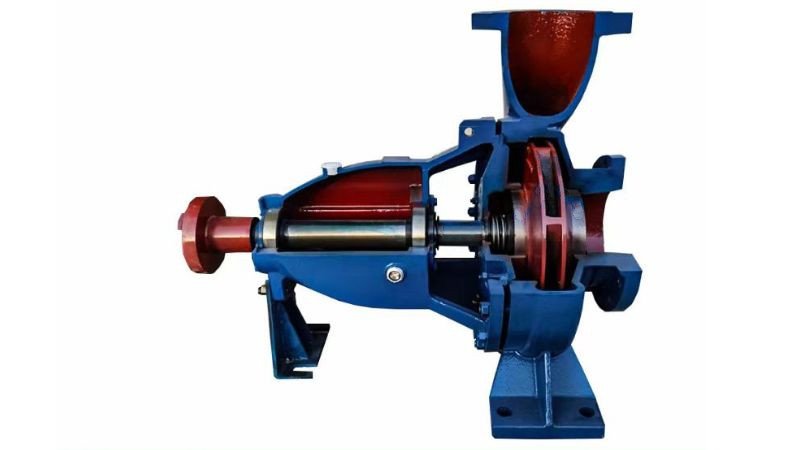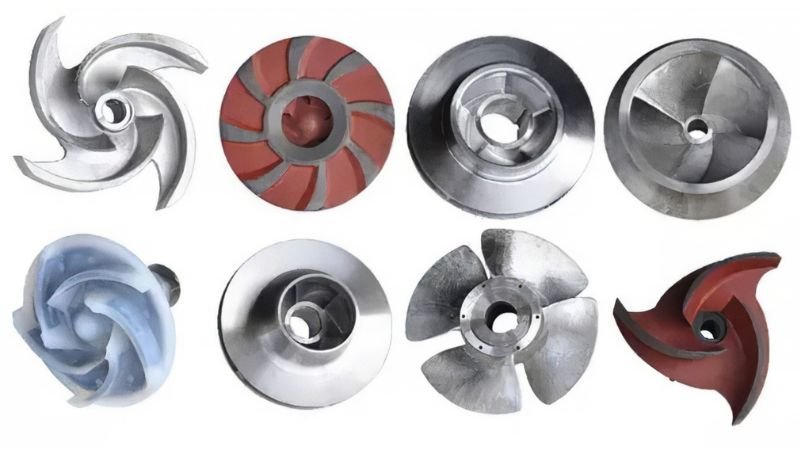Water pumps are designed to move clean water with minimal solids, focusing on efficiency and lower wear. Slurry pumps are built to handle abrasive, high-density slurries, featuring robust construction and wear-resistant materials. While water pumps are suitable for general applications, slurry pumps are great for demanding industrial environments.

The difference between Water pump VS Slurry pump
1.Different Design:
The main thing that sets water pumps and slurry pumps apart is their design. Water pumps are usually designed to handle clean water or liquids with minimal solids. They’re built to be simple and are designed to be efficient and reliable at moving water. Slurry pumps are designed to handle abrasive and high-density slurries, which are mixtures of solid particles and liquids. That’s why slurry pumps are made with stronger, more durable materials like high-chrome alloys and rubber linings to handle the abrasive slurry.

2.Different work efficiency:
Water pumps and slurry pumps have different work efficiencies because they’re used for different things. Water pumps are usually more efficient when it comes to moving water, as they’re designed to handle lower viscosity and minimal solid content. This means you can pump more water with less energy. On the other hand, slurry pumps are designed to handle thick, abrasive slurries, which makes them less efficient in terms of flow rate and energy consumption compared to water pumps. Slurry pumps are great at what they do, though, and can move slurries really efficiently even in tough conditions.
3.Different work temperature:
Another thing that sets water pumps and slurry pumps apart is their operational temperature range. Water pumps are usually used in places where the water temperature is pretty moderate, usually between 0°C and 100°C. They’re not built to handle extreme temperatures or highly abrasive materials. Slurry pumps are built to handle more demanding conditions, including higher temperatures. Slurry pumps are great for mining and mineral processing, where slurries can get pretty hot because of the materials being moved.

4.Robust Construction:
Slurry pumps are built to last way more than water pumps. Slurry pumps are built to last in tough conditions and can handle harsh environments and abrasive materials. They often have thicker walls, reinforced casings, and wear-resistant materials to make them last longer and work more reliably. Water pumps are built to last, but they don’t need to be as tough as slurry pumps because they’re used with less demanding fluids. Slurry pumps are built to last, making them perfect for industries where durability and longevity are key.
5.Different Impeller Design:
Another key difference between water pumps and slurry pumps is the impeller design. Water pumps usually have impellers that are designed to maximize the flow of water with minimal resistance. They often feature smoother and more streamlined shapes. Slurry pumps, on the other hand, have impellers that can handle the abrasive nature of slurries. These impellers are usually more rugged, with thicker vanes and larger clearances to let solid particles pass through without clogging or excessive wear. The specialised impeller design in slurry pumps means they can operate effectively even in tough conditions.

6.Wear Resistance:
Wear resistance is really important when it comes to designing slurry pumps. Since slurry pumps have to deal with some pretty harsh stuff, they’re made from super tough materials like high-chrome alloys and elastomers. These materials really extend the pump’s operational life and cut down on maintenance requirements. Water pumps don’t need to be as wear-resistant because they’re used with clean or lightly contaminated water. So, the materials used in water pumps are chosen for their efficiency and cost-effectiveness, rather than their ability to resist abrasion.

Conclusion:
To sum up, water pumps and slurry pumps are made for different things. Water pumps are designed to move clean water efficiently, and they’re great for a wide range of applications where durability and cost are important. Slurry pumps are built to handle abrasive and high-density slurries. They’re made to last with robust construction, specialized impeller designs, and high wear resistance. It’s important to understand the differences between these two types of pumps so you can choose the right pump for a specific application. By choosing the appropriate pump, you can ensure reliable performance, longevity, and cost-efficiency in your operations.
